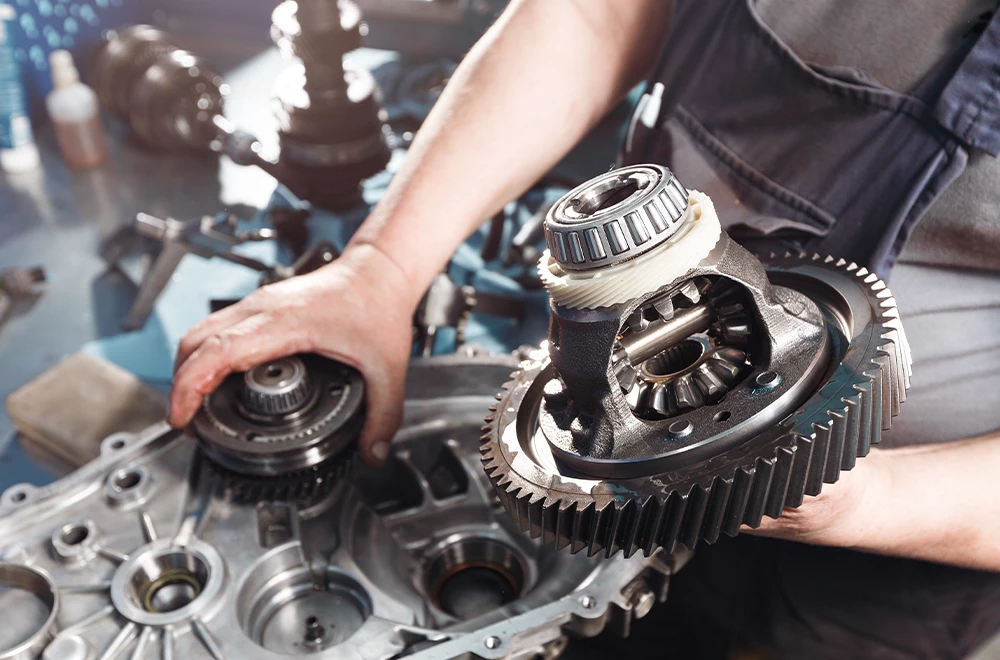Have you ever wondered what makes your car smoothly transition from one speed to another? That’s where a vehicle transmission comes into play, silently working behind the scenes to ensure your driving experience is seamless. But what exactly is a vehicle transmission, and how does it work? Let’s find out!
What is a Vehicle Transmission?
A vehicle transmission, often referred to as the heart of an automobile, serves as the vital link between a vehicle’s engine and its wheels. In simpler terms, it is the incredibly intricate and precisely engineered gearbox that facilitates the transfer of power generated by the engine to the wheels, allowing your car to gracefully move forward or backward with utmost precision and control.
The transmission plays a pivotal role in not only controlling the speed and torque, but also optimizing the vehicle’s performance across a wide range of driving conditions, from smooth highways to challenging terrains. With its complex system of gears, clutches, and hydraulics, the transmission ensures seamless power delivery, enabling your vehicle to effortlessly navigate through the ever-changing demands of the road—offering a truly exhilarating driving experience.
The Two Main Types of Vehicle Transmissions
There are primarily two types of transmissions: automatic and manual, each with its own unique mechanism. Let’s discuss each type in detail:
Automatic Transmission
Automatic transmissions, which are widely used in modern vehicles, employ a sophisticated system of hydraulics and gears to smoothly transition between different gears without requiring manual intervention. This advanced technology enhances the driving experience, especially in heavy traffic situations where seamless gear shifts can alleviate the stress and frustration of stop-and-go driving.
Manual Transmission
In contrast, manual transmissions put the driver in complete control of their driving experience. They require manual shifting of gears using a clutch pedal and gear shift, allowing for a more personalized and hands-on approach to driving. While not as common nowadays, manual transmissions offer a level of engagement and connection with the vehicle that can truly enhance the driving experience for automotive enthusiasts.
How Do Vehicle Transmissions Work?
Depending on the type of transmission, there are different processes and components involved in its functioning. However, they all work towards the same goal: transferring power from the engine to the wheels.
Let’s take a closer look at how each type of transmission achieves this:
How Does an Automatic Transmission Work?
In an automatic transmission, your car takes care of all the thinking for you. It intelligently and seamlessly selects the optimal gear based on your speed, the load on the engine, and even the road conditions. Think of it as having a highly efficient personal assistant dedicated to managing your gears, ensuring not only a smooth and efficient ride, but also maximizing fuel efficiency and engine performance. With an automatic transmission, you only need to effortlessly shift between “Drive,” “Reverse,” and “Park,” while your car handles all the intricate gear changes in between.
How Does a Manual Transmission Work?
Manual transmissions, on the other hand, put you in complete control of your driving experience. Picture yourself as the maestro of the road, orchestrating the gears with a precise gear stick and clutch pedal. With each gear shift, you have the opportunity to fine-tune the engine’s power delivery, perfectly synchronizing it with your driving style. This level of involvement creates a more immersive and engaging driving experience, where every shift becomes a seamless connection between man and machine.
What Are the Components of a Transmission System?
To grasp the intricacies of a transmission system, let’s explore its essential components:
- Transmission Case: Housing all the transmission components, the transmission case protects and supports the internal elements.
- Bell Housing: This component connects the transmission to the engine and contains the flywheel, torque converter (in automatics), and clutch (in manuals).
- Gears and Shafts: The heart of the transmission, gears and shafts work together to provide different gear ratios, allowing the vehicle to operate efficiently across various speeds.
- Valve Body: Found in automatic transmissions, the valve body regulates fluid flow, controlling gear engagement and disengagement.
- Fluid Pump: This pump circulates transmission fluid, ensuring proper lubrication and cooling of the transmission components.
Keep Your Vehicle Transmission Well-Maintained
Having a clear understanding of how your vehicle transmission operates is crucial for maintaining it properly and ensuring a seamless driving experience. Regular maintenance tasks, such as changing the transmission fluid and conducting periodic inspections for any potential issues, can help prevent expensive repairs down the line.
Remember to refer to your vehicle’s manual for specific maintenance guidelines and always seek professional assistance if you encounter any unusual symptoms or experience malfunctions with your transmission. At Transbuilt Transmission, we specialize in providing top-notch transmission services and repairs to keep your vehicle running smoothly. Whether you have an automatic or manual transmission, our team of experts is fully equipped to cater to all your transmission needs.

